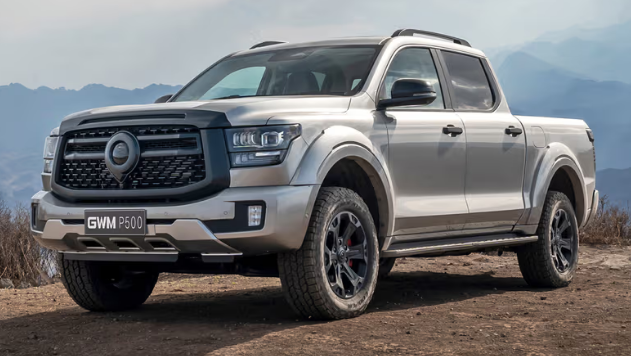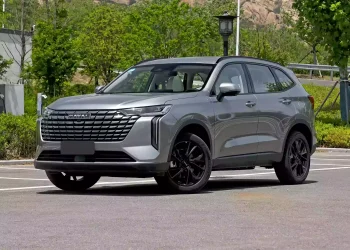The automotive industry in South Africa is on the brink of a new chapter as GWM South Africa officially enters the race to manufacture a brand-new model codenamed “EC15” locally. Competing against strong bids from North Africa and Southern Europe, this move could transform the landscape of automotive production in the region.
According to the company’s Chief Operating Officer, the “EC15” represents a major investment opportunity that aligns with South Africa’s automotive development policies. If successful, this project would position the country as a critical hub for vehicle manufacturing, creating jobs, boosting local content, and strengthening supply chains.
Why Local Manufacturing Matters for South Africa
South Africa has a long history of automotive production, supported by established policies and skilled labor. Local manufacturing brings several benefits, including:
- Job Creation: Thousands of new employment opportunities across production, logistics, and supply chain.
- Economic Growth: Increased GDP contribution from manufacturing.
- Technology Transfer: Access to global technologies and skills.
- Export Potential: Strengthening South Africa’s position as a vehicle exporter.
When a global automaker like GWM invests in a manufacturing facility, it also boosts related sectors such as steel, rubber, electronics, and logistics.
“Local vehicle manufacturing isn’t just about building cars — it’s about building an economy.”
Inside the “EC15” Project
The “EC15” project is currently in the bidding phase, with GWM competing to secure production rights in South Africa. Though details on the vehicle segment remain under wraps, insiders suggest it could be a compact SUV or crossover, designed to meet African and global market demands.
Key Project Highlights:
- Aimed at mass-market affordability with modern features.
- Targeting both local and export markets.
- Will utilize existing and new production facilities if approved.
- Could create thousands of direct and indirect jobs.
The decision is expected to consider factors like policy support, logistics infrastructure, and market readiness.
Competing Against North Africa and Southern Europe
The bidding landscape is competitive. North Africa and parts of Southern Europe offer logistical advantages, particularly for exports to Europe and the Middle East. However, South Africa brings its own strategic strengths, including:
- An established automotive ecosystem.
- Strong trade agreements.
- A skilled and experienced workforce.
- Government support through automotive incentives.
South Africa’s bid must overcome geographic distance and higher shipping costs to secure the project.
Transport & Cost Challenges at Africa’s Southern Tip
South Africa faces a unique geographic disadvantage: its distance from key export markets increases shipping and transport costs. Moving components and vehicles from the southern tip to northern markets can be expensive and time-consuming.
Logistical Considerations:
- Importing raw materials for assembly.
- Exporting finished vehicles to global markets.
- Fuel and port charges affecting margins.
This is one of the key factors the GWM team must address to make the “EC15” project viable locally.
The Role of APDP2 in Local Vehicle Production
The Automotive Production and Development Programme (APDP2) plays a critical role in determining whether new manufacturers can enter the South African market successfully.
Key APDP2 Requirements:
- Minimum 40% local content of origin.
- Minimum 50,000-unit annual production volume.
- Engagement with local suppliers.
- Eligibility for government incentives.
While these policies encourage deeper local integration, they also create barriers to entry for new investors who must commit to high capital investment upfront.
Local Content and Volume Demand
For GWM to secure its bid, it must meet strict local content requirements:
| Requirement | Description | Impact |
| 40% Local Content | Parts and components sourced locally | Boosts local industry |
| 50,000 Units | Annual production minimum | Ensures volume efficiency |
| Supplier Integration | Local partnerships | Strengthens economy |
Meeting these targets will not only help GWM comply with APDP2 but also create a ripple effect across the South African automotive value chain.
Why GWM is Targeting South Africa
GWM’s interest in South Africa is strategic and calculated. The country’s established automotive infrastructure, reliable workforce, and government incentives make it an attractive destination.
Additional advantages include:
- A well-developed parts supply network.
- Access to African and global export markets.
- Experience with multiple automotive brands.
- Incentive programs to reduce initial costs.
South Africa’s market maturity positions it well to become a regional manufacturing hub.
Industry Reactions and Government Policy
The South African government has long encouraged foreign direct investment (FDI) in automotive manufacturing. Industry stakeholders see the “EC15” bid as a positive signal that global automakers still see the country as a viable manufacturing location.
Government officials have also indicated that policy reviews may be needed to lower barriers and make South Africa more competitive globally.
EV and Future Mobility Opportunities
The “EC15” project arrives at a time when electric mobility is gaining momentum in Africa. South Africa has started adopting EV policies, and global automakers are preparing for a green mobility transition.
For drivers looking to explore sustainable mobility options, EV24.africa offers import solutions for electric cars, making it easier to access affordable EV models from around the world.
This growing ecosystem supports:
- EV adoption.
- Infrastructure development.
- Green job creation.
Practical Tips for Car Buyers in South Africa
If you’re in the market for a new or used car, understanding market trends can help you make smarter decisions:
- Compare prices across multiple dealerships.
- Check service history and mileage.
- Consider fuel efficiency and maintenance costs.
- Explore financing options carefully.
- Look into future resale value.
For drivers interested in second-hand cars, auto24.co.za offers a wide selection of vehicles suitable for South African roads.
Strategic External Links for Buyers
To make informed decisions, South African car buyers can leverage these trusted platforms:
- imotonews.co.za – Latest car news, driving tips, and reviews.
- auto24.co.za – Reliable marketplace for second-hand cars.
- EV24.africa – EV import solutions for eco-conscious buyers.
These resources offer valuable insights and help buyers make smarter automotive choices.
Frequently Asked Questions (FAQ)
1. What is the “EC15” project by GWM South Africa?
It’s a new vehicle manufacturing initiative currently in the bidding phase, which could see a new model produced locally.
2. Why is South Africa competing with North Africa and Southern Europe?
Because these regions offer competitive logistics and infrastructure, making the bidding process highly competitive.
3. What are the major APDP2 requirements for manufacturers?
They must meet 40% local content and produce at least 50,000 units annually to qualify for incentives.
4. How will this project impact local jobs?
If successful, it will create thousands of direct and indirect jobs across manufacturing and logistics.
5. How can buyers benefit from these developments?
A local manufacturing plant often means better availability, lower costs, and more choices for local car buyers.
6. Where can South Africans find reliable used cars?
Platforms like auto24.co.za provide a wide selection of quality used cars suited for local conditions.
Conclusion
The “EC15” project represents a strategic opportunity for South Africa to reaffirm its role as a key player in global automotive manufacturing. While the competition is stiff, the country’s robust infrastructure, skilled workforce, and supportive policies make it a strong contender.
Whether you’re an industry professional or a car buyer, this development could signal a more accessible and dynamic automotive future for South Africa.





